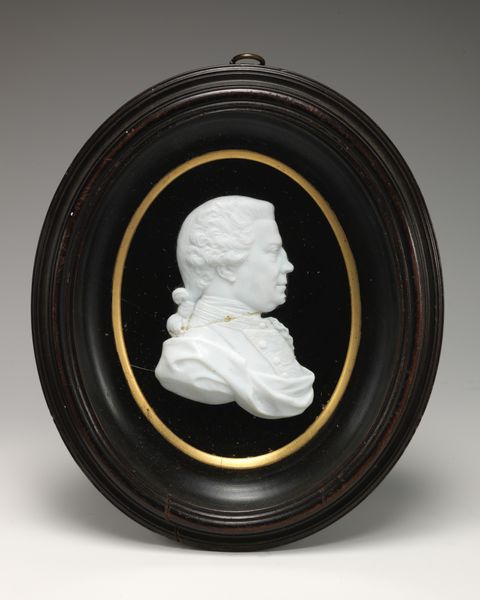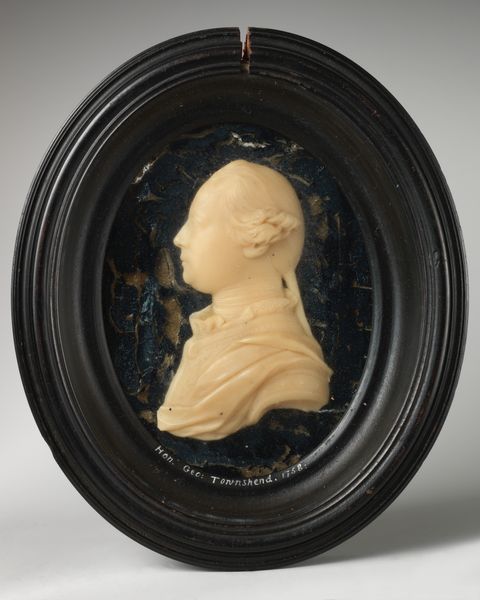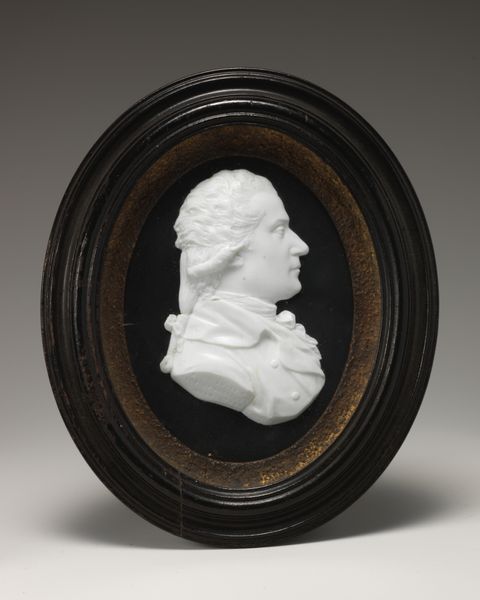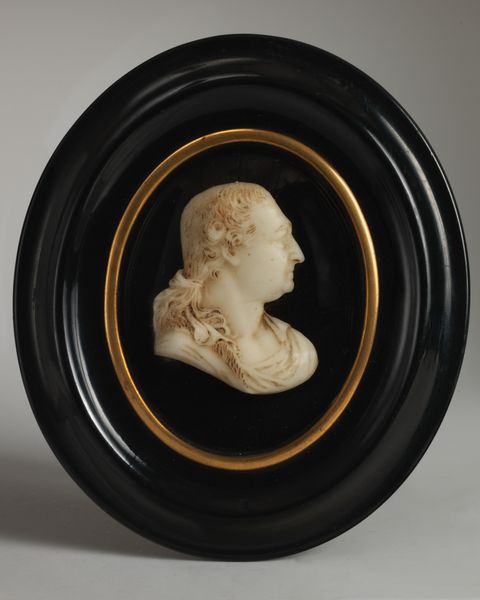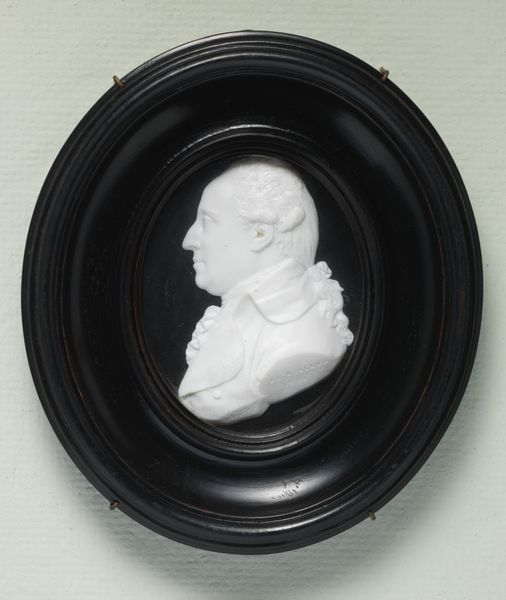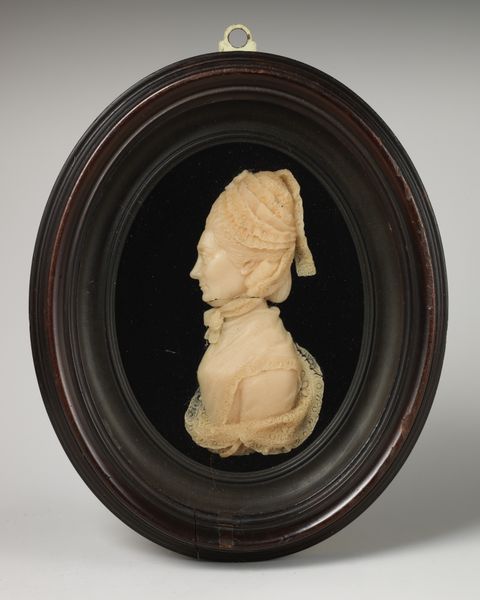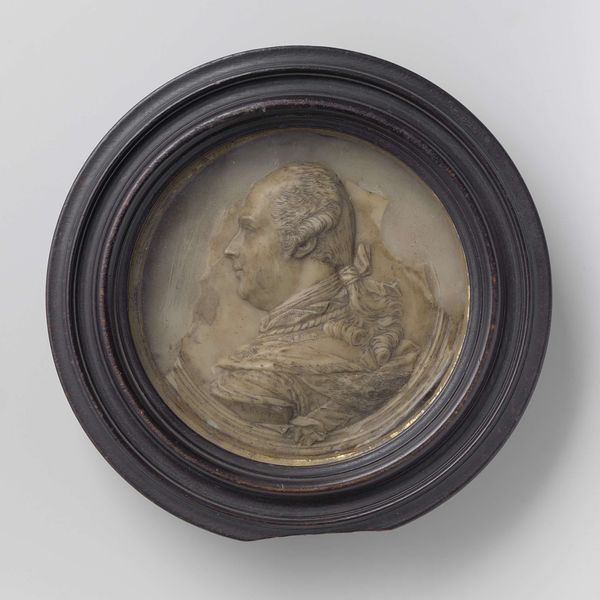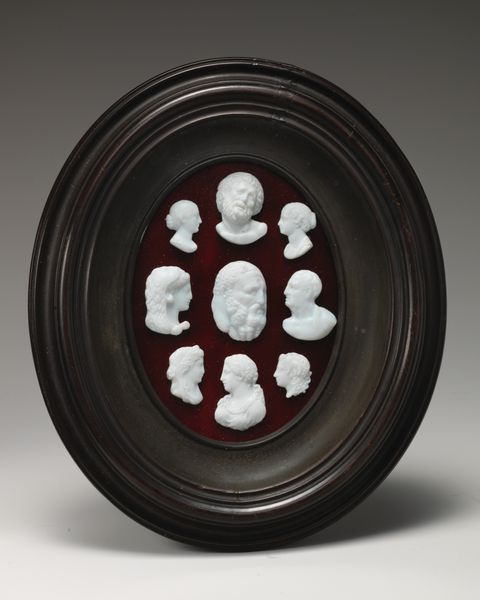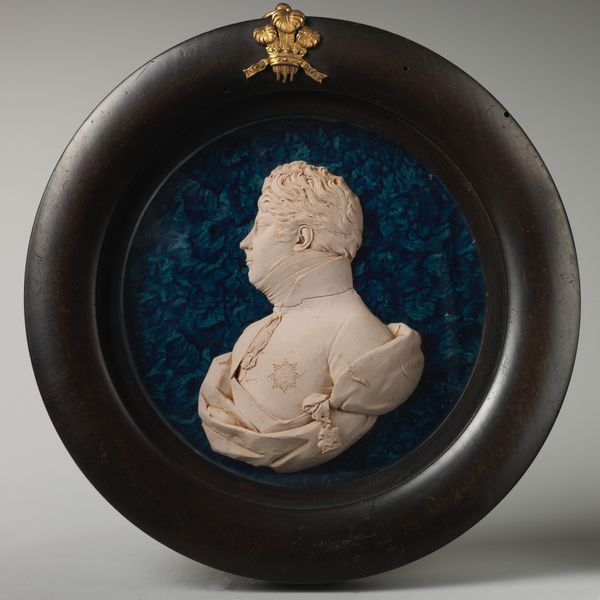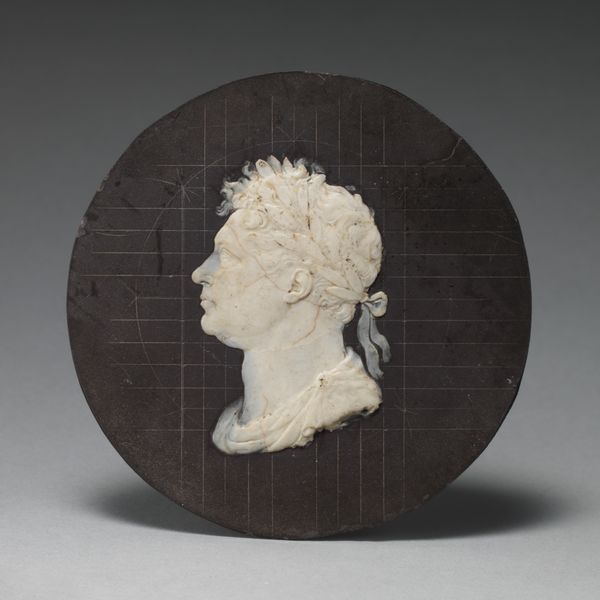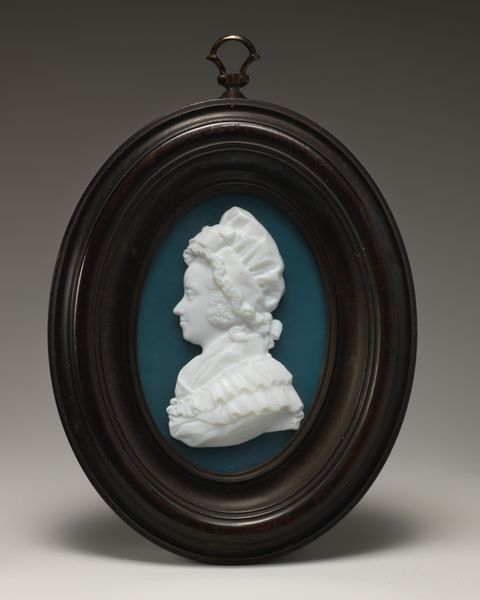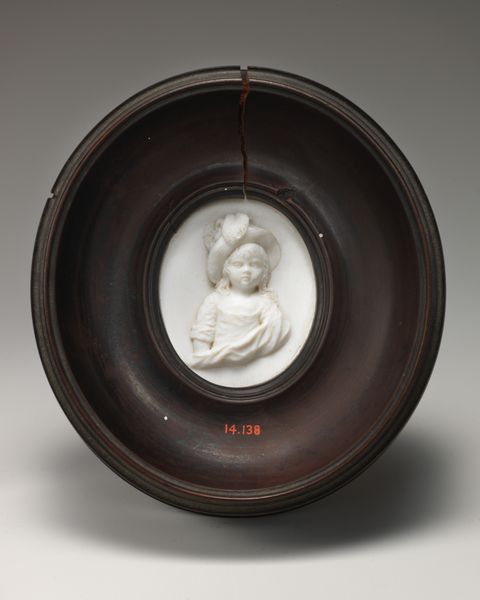
glass, sculpture
#
portrait
#
neoclacissism
#
glass
#
sculpture
#
men
#
decorative-art
#
profile
Dimensions: 3 5/8 × 2 7/8 in. (9.2 × 7.3 cm)
Copyright: Public Domain
Curator: Here we have a glass portrait of Rudolph Eric Raspe, dating to 1784, created by James Tassie. It’s currently housed at the Metropolitan Museum of Art. Editor: My first thought is how incredibly cool and distant he appears. The whiteness of the glass, the stark profile... it almost feels like looking at a ghost, frozen in time. Curator: That’s an astute observation. It fits neatly into the Neoclassical aesthetics prevalent then, particularly in how it emulates the look of ancient Roman cameos. These portraits, especially those commissioned and collected by the aristocracy, were designed to evoke an aura of timelessness and power. Editor: Absolutely, I see that aspiration, yet something about Raspe's history complicates that simple reading. Raspe was, by most accounts, a fabulist and trickster; his life was filled with as much scandal as scientific pursuits. Do we take this object then as legitimizing Raspe? Is this, like other objects, about power? Curator: The role of portraits like these in legitimizing status cannot be overstated. Even someone with Raspe’s complicated reputation could leverage this visual language to present a cultivated persona to potential patrons. James Tassie, the artist, ran a lucrative business producing these portraits for the Enlightenment elite, playing into the obsession with scientific classification. He essentially mass-produced 'reputation' for those who sought it. Editor: That’s fascinating when we consider Raspe again. The act of representing him in such a manner obscures the exploitation inherent to his stories, his involvement in theft… Instead, we're presented with the sanitized respectability so many wished to associate with themselves in that era. Curator: Exactly, this portrait offers an interesting window into the social aspirations and image-making of the late 18th century. These cameos, these tokens, really speak volumes about the construction of historical narrative and legacy. Editor: Right. Considering Tassie’s meticulous craftsmanship coupled with the cultural currency of this era allows for some fresh understandings about status and persona then—especially regarding figures as complicated as Raspe.
Comments
No comments
Be the first to comment and join the conversation on the ultimate creative platform.
